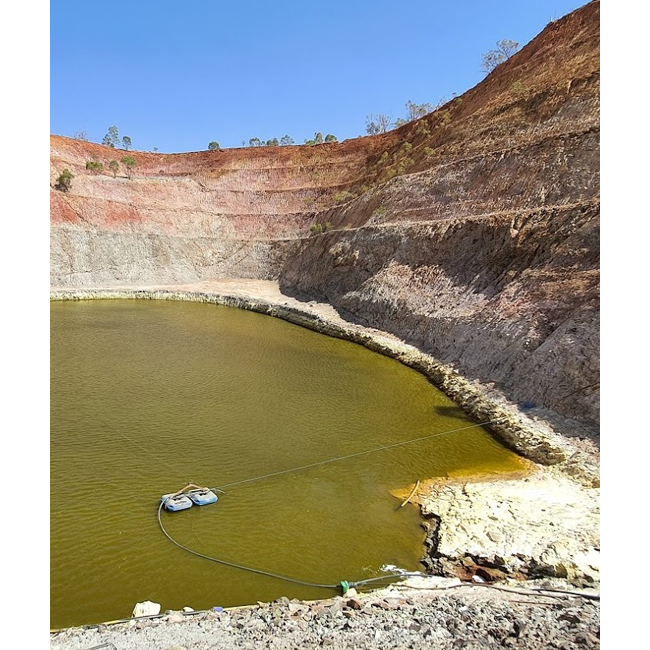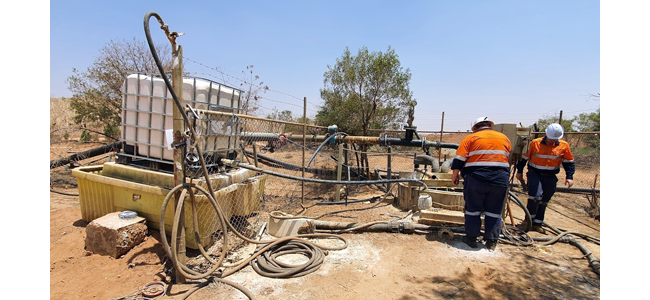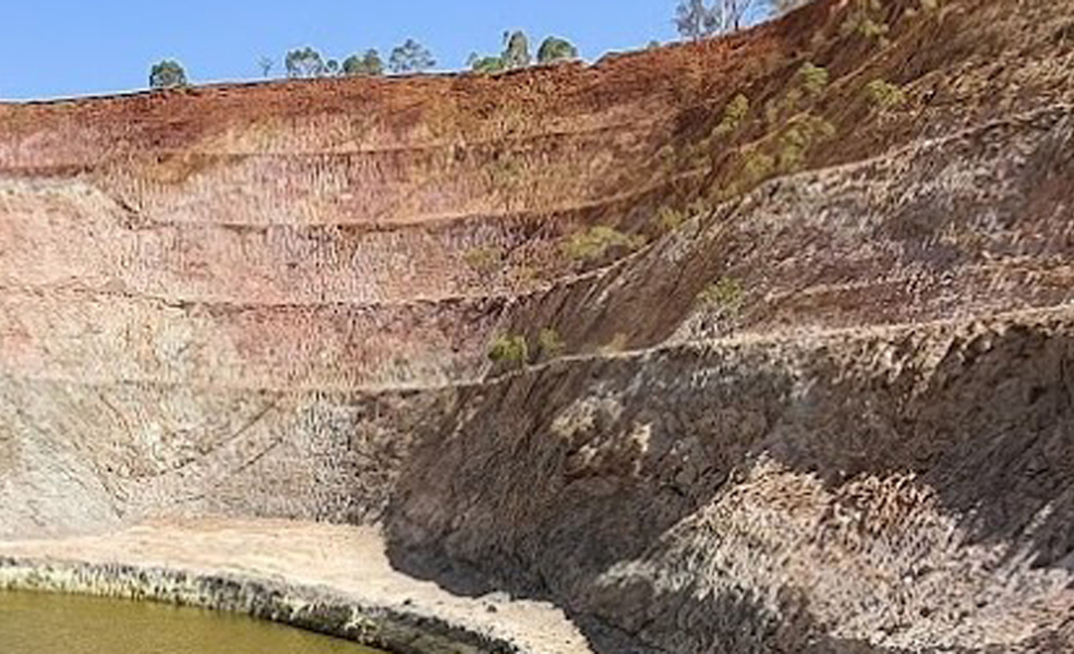With Calix's ACTI-mag, a mine in Central NSW neutralises the water and precipitates any heavy metal contamination within the water for use within their froth flotation process, for the extraction of precious metals.
Challenges
- Drought resulted in a low water table, exposing Potential Acid Sulphate Soils (PASS).
- Mine pit water had become very acidic due to the falling water table.
- Fresh water for the process was in short supply, at 2% storage capacity, alternative supplies needed to be sourced.
- The local council had given the mine site an ultimatum about the use of town drinking water in the minerals process.
Objectives
- Water recycling within a flotation process
- Recycling water during drought
- Reducing costs compared to caustic soda
- Rehabilitating the mine pit
- pH Neutralisation of pit water
Solution

ACTI-Mag application to the water that had accumulated in the pit allowed for a pH adjustment.This allowed the mine site to neutralise the water and precipitate any heavy metal contamination within the water for use within their froth flotation process, for the extraction of precious metals.
Benefits of ACTI-Mag
Reduced the cost of pH neutralisation from the more expensive option of caustic soda (sodium hydroxide).
Better dispersion within the pit for consistent neutralisation within the whole water body.
Stronger alkalinity allowed the precipitation of heavy metal contamination before re-use.
Reduced the risk to people, equipment and the environment from dosing neat caustic soda into a pipeline.
INTRODUCTION
Central NSW was suffering from a drought that was nearing five years long. All of the local water streams and rivers had dried up and the supply of potable water for the town was down to 2% storage capacity.
The water supply was a critical part of the operation of the mine site just outside the town. Their froth flotation process relies on water as a carrier to separate precious metals from other minerals within the crushed and ground rock.
Due to the dwindling water supply, the local council had asked the mine site to stop using the potable water supply that was also being used by the town for drinking water. A secondary pipeline from another body of water, also had no guarantee of supply due to the drought.
Fortunately, the mine site had an old underground mine and pit that had filled with rain and ground water over the ten years since it was last used. The ability to use this water was critical for the ongoing operation of the mine processing site.

Fortunately, the mine site had an old underground mine and pit that had filled with rain and ground water over the ten years since it was last used. The ability to use this water was critical for the ongoing operation of the mine processing site.
CHALLENGES
The mine site had an existing plan to treat and recycle the water, however they were surprised by the additional acidic load as a result of the water table falling. As the water table falls, more Potential Acid Sulphate Soil (PASS) is exposed and oxidised, which results in further acid being donated into the pit water.
Caustic soda was being used to neutralise the acid in the pit water. High concentration caustic soda has a density of 1.5 g/cc which seemed to cause the caustic to drop to the bottom of the pond as it was being added. Due also to poor mixing, this resulted in zones of different pH within the pond.
Consideration had been given to diluting the caustic as it was added to reduce its density, however due to the heat of dissolution when mixing caustic and water within a plastic mine pipe, it was deemed too high risk to do this without significant investment in accurate dosing equipment. Another alternative was to spray the caustic over the pond, however this was ruled out because caustic can cause severe chemical burns. Other chemicals like soda ash and lime were considered.
These however would add undesired dissolved minerals to the water (hard water), rendering it unsuitable for re-cycling, as well as being cost prohibitive.

SOLUTION
Calix was able to provide a rapid solution in the form of ACTI-Mag for acid neutralisation. ACTI-Mag is a high surface area magnesium hydroxide product. It is non hazardous, non-toxic and has a very low solubility, which makes it perfect for acid neutralisation while maintaining the water quality for any kind of downstream use.
ACTI-Mag was able to be sprayed or pumped into the pond with good dispersion using an existing carry water line for dilution and delivery, which was not possible with caustic due to the heat of mixing.
In addition to treating the pit itself, Calix was able to set up a dosing rig to treat the water being pumped out of the pit, so that the water quality, including pH and alkalinity, was within specification while the pit was being treated. This allowed the immediate use of the water, instead of having to wait until the whole pond was treated.

CONCLUSION
ACTI-Mag turned out to be a very cost effective solution for the treatment of mine pit water, and other water that had been contaminated with acid.
Whether the acid was leached from the ground, or as a result of an industrial waste, the ACTI-Mag was able to make use of the high surface area to rapidly neutralise the acid contamination. There are plenty of alternative chemicals on the market that promise acid neutralisation, but there is nothing that delivers the results as quickly and as cost effectively as ACTI-Mag.
Minerals processing is core to the Calix business, so we understand that using an inferior product can result in additional risk or nasty side effects to your process that can cost you more than the product in the first place. Calix has the expertise to understand your process and analyse the risks.
So you can be confident you have made the right choice to maximise your core business.
ABOUT THIS COMPANY
Calix
Calix is a team of dedicated people developing a unique, patented technology to provide industrial solutions that address global sustainability challenges.
HEAD OFFICE:
- Level 1, 9-11 Bridge Street, Pymble Sydney, Australia
- Telephone: +61 (2) 8199 7400
- Web: www.calix.global

























